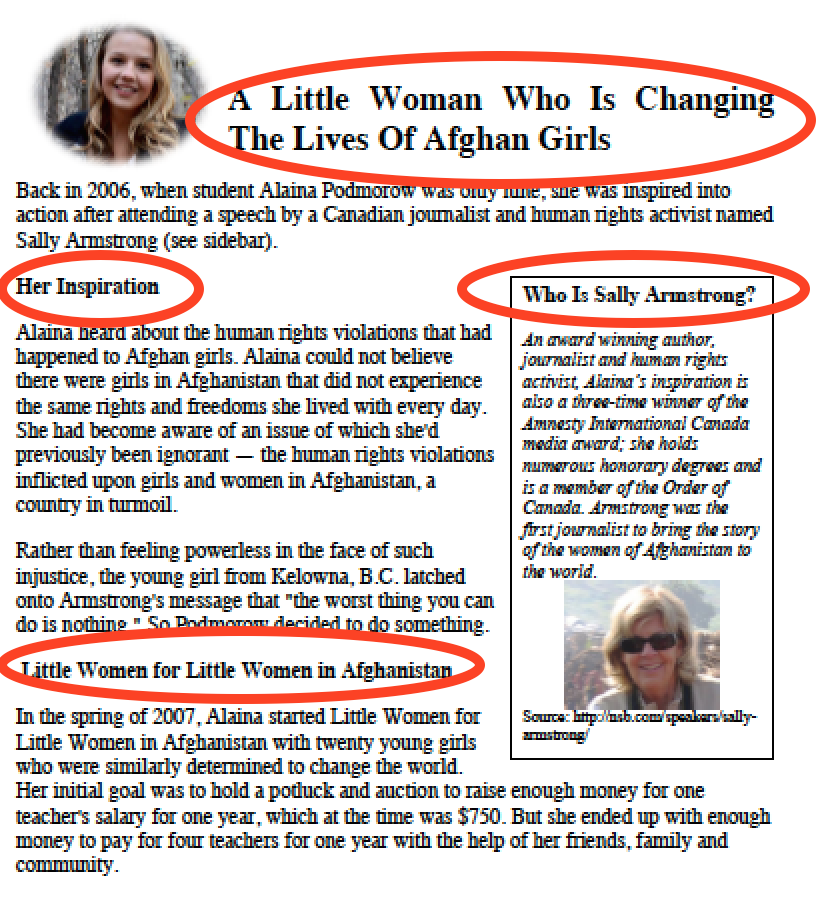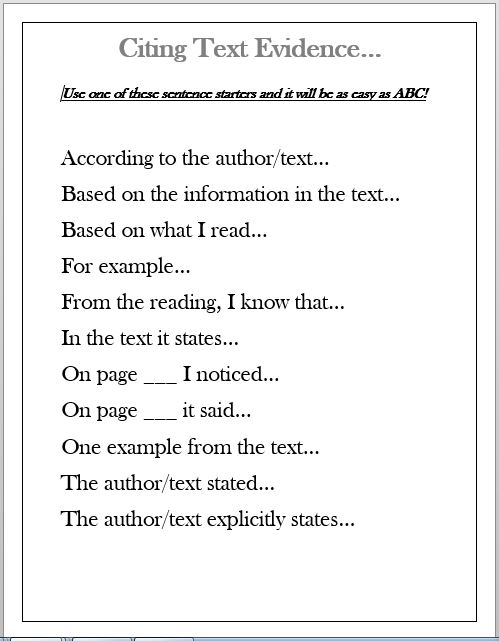3.6 Turn It Into A Question
| Site: | Cowichan Valley School District - Moodle |
| Course: | ELA5, CSS, Sferrazza |
| Book: | 3.6 Turn It Into A Question |
| Printed by: | Guest user |
| Date: | Sunday, 4 January 2026, 5:09 PM |
Learning Target
By the end of this lesson, you should be able to say YES to the following question.
- Can I apply thinking skills to gain meaning from text?
- Can I respond to text in a variety of ways, including providing support for my response?

Introduction
Active readers ask questions before, during, and after they read. Questioning leads the reader deeper into the text and encourages thinking. In this lesson, you will explore a quick strategy called Turning It Into A Question that can help you locate the main ideas from a piece of text. You will also use Zooming In to help you.
You've learned to zoom in on text features so you know what headings and subheadings are. As you can see here, the first page of this article has a title and some headings. We can use these headings to help focus our reading and to determine the main points of the article. Read on to find out how.

Take a PEEK!
In this lesson, you'll be learning a reading strategy and practising using an article about an impressive young person from Kelowna, BC. Before we start learning the strategy, you can "Take a Peek!" at the article, as long as you only take a peek and don't read the whole thing yet!
First, download the article.
In your Learning Guide, complete Take a Peek. Then, without reading the article, return to this online lesson.

Turning It Into A Question 1
I'll start by reading the title.
A Little Woman Who Is Changing The Lives Of Afghan Girls
I'm going to copy the headings onto my chart. I will include the title.
Step One: Put the title on the chart. (in brown)
Step Two: I'll turn that title into a question. It actually seemed to need two important questions. (in red)
|
Title or Heading |
Turning It Into A Question |
Reading to Answer the Question |
|
A Little Woman Who Is Changing The Lives Of Afghan Girls |
Who was the little woman? How is she changing lives of Afghan girls? |
|
|
|
|
|
|
|
|
|
|
|
|
|
Turning It Into A Question 2
The next heading is:
Her Inspiration
I'm going to copy the heading onto my chart.
Step One: Put the heading on the chart. (in brown)
Step Two: I'll turn that heading into a question. (in red)
|
Title or Heading |
Turning It Into A Question |
Reading to Answer the Question |
|
A Little Woman Who Is Changing The Lives Of Afghan Girls |
Who was the little woman? How is she changing lives of Afghan girls? |
|
|
Her Inspiration |
Who or what is her inspiration? |
|
|
|
|
|
|
|
|
|
Your Turn - Step One
In your Learning Guide, complete step one on Chart - Turning It Into A Question. Then, before reading the article, return to this online lesson.

Reading To Find Answers
The next step is to read the article to try to find the answers to the questions. The questions are guides to help determine the main ideas of the article. The first questions are:
- Who Is the Little Woman?
- How Is She Changing the Lives of Afghan Girls?
As you read the article, try to find the answers by searching for clues and evidence in the text.
Your Turn!
Using the headings to help guide our reading is a way for us to find the important information in a text. Turning those headings into questions and answering the questions helps us focus on the important facts rather than the details.
Finish reading the article and answer the questions you recorded on the chart in your Learning Guide.

OREO Paragraph
 Now that you've read the article and answered the questions, you are ready for anything. When you respond to questions about an article or text, can you use evidence to support your answer? It is easy if you know the words to use.
Now that you've read the article and answered the questions, you are ready for anything. When you respond to questions about an article or text, can you use evidence to support your answer? It is easy if you know the words to use.
Sarah Armstrong and Alaina Podmorow have shown that inspiring others can be contagious. In a paragraph in your Learning Guide, write a well organized OREO paragraph to explain this. Your paragraph is started for you.
Be sure to include two of the citing text evidence prompts from this page.
Go to your Learning Guide and complete, Citing Evidence.

Revising, Editing, and Evaluating
Go to your Learning Guide and use the checklists to revise, edit, and evaluate your first draft. Use a different colour pen so your teacher can see your changes. If possible, do the evaluate step with your home facilitator.

